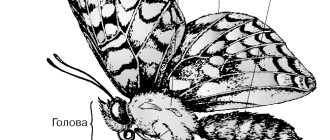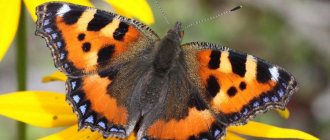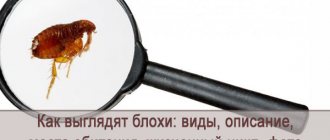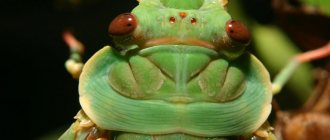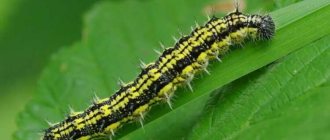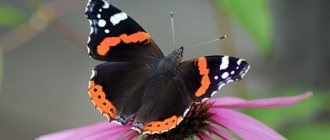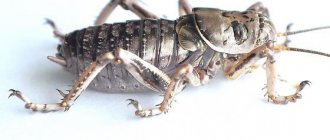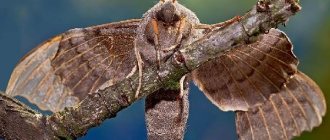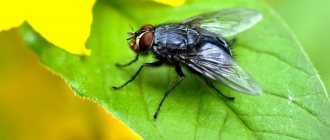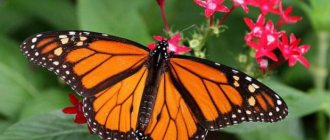- Wild animals
- >>
- Insects
The hawk moth butterfly is a very bright, extraordinary representative of lepidopteran insects.
It can often be found under the name hummingbird. This name is due to its bright color and feeding habits. The butterfly is distinguished by its medium size and the presence of a special proboscis, thanks to which it does not sit on the flower itself, but flutters and soars around it, collecting sweet nectar. Today the butterfly is a rather rare insect. Despite the fact that the caterpillars of these butterflies are quite voracious, it is not recommended to use chemical insecticides to combat them.
Origin of the species and description
Photo: Hawk Moth Butterfly
The hawk moth butterfly is an arthropod insect, classified in the order Lepidoptera, the hawk moth family. The name of one of the most famous subspecies of the hawkmoth subspecies is death's head. This is explained by the fact that on the outer surface of the head there is an image resembling the shape of a skull. This butterfly is the hero of many mythical tales and beliefs.
The scientist Heinrich Prell studied the species and described it in the 20th century. This type of insect has always aroused unprecedented interest. In ancient times, these butterflies were considered messengers of misfortune and signs of failure and disease. People believed that if this insect suddenly entered a human home, then death would soon come here. There was also such a sign: if a piece of a wing gets into the eye, then the person will soon go blind and lose his sight.
Video: Butterfly Hawkmoth
In zoological atlases, the hawk moth butterfly is found under the name Acherontia atropos. Translated from Latin, the name of this butterfly symbolizes the name of one of the water sources of the kingdom of the dead. Initially, zoologists believed that butterflies appeared on earth after the appearance of flowering plants. However, this theory was not subsequently confirmed. Establishing the exact period of appearance of butterflies on earth is problematic. This is due to the fact that Lepidoptera have a fragile body.
Findings of the remains of ancient ancestors of modern butterflies are very rare. They were mainly found in pieces of resin or amber. The most ancient finds of the ancient ancestors of modern Lepidoptera date back to 140-180 million years ago. However, scientists claim that the first primitive butterflies, resembling moths in appearance, appeared on earth a little over 280 million years ago. This type of butterfly is divided into a huge number of subspecies, each of which has its own distinctive characteristics.
Habitat
Most often the caterpillar can be found on the ground, but many representatives have begun to develop under water. For example, the Hawaiian moth caterpillar has spread on land and in water.
Caterpillars are also divided into two types, according to which they lead either a secretive or free lifestyle. Caterpillars, which lead a free lifestyle, live on the foliage of plants and are large in size. Secretive caterpillars include a number of varieties:
- Leafworms. They hide in the curled leaves of various trees.
- Frugivores. Their habitat is limited to tree fruits;
- Drillers. They can only be found inside trees and shoots;
- Miners. These species make special passages in the buds, leaves and petioles;
- Gall formers. They are famous for causing pathology in the growth of damaged plant parts.
Appearance and features
Photo: Hawkmoth butterfly similar to a hummingbird
Hawkmoths are considered relatively large insects and have characteristic features.
Signs of this type of lepidoptera:
- massive body;
- long thin wings. In this case, the front pair of wings is much longer than the rear pair. At rest, most often the lower pair of wings is hidden under the lower one, or they are folded in the shape of a house;
- antennae without round beads at the end;
- the body has a characteristic pattern that resembles tree bark.
The wingspan of these butterflies ranges from 3 to 10 centimeters. The body length is 10-11 centimeters. This species of Lepidoptera exhibits sexual dimorphism. Females are slightly larger than males. The weight of one adult female is 3-9 grams, male – 2-7 grams.
Size, body weight and color are largely determined by the subspecies. For example, the largest representative of this species is antheus. Its wingspan is 16-17 centimeters. The smallest is the dwarf hawk moth. Its wing span does not exceed 2-3 mm. Wine hawk moth has a characteristic dark red hue. Color is also largely determined by region of habitat and diet.
The butterfly has antennae that can be of varying lengths, spindle-shaped or rod-shaped. They are pointed and curved upward. In males they are much wider than in females. The oral apparatus of the hawk moth is represented by an elongated, thin proboscis. Its length can be several times the size of the body, and reaches 15-17 centimeters. The Madagascan hawk moth has the longest proboscis; its length exceeds 30 centimeters. In some subspecies it is short or underdeveloped. During the period when butterflies do not eat, it is simply rolled up into a tube.
On the lips of butterflies there are rather developed palps, which are curved upward and covered with scales. The insect has rather complex, large round eyes. They are slightly covered with shaggy eyebrows. Special infrared locators are built into the organs of vision. With their help, insects not only distinguish colors, but are also able to capture infrared invisible rays. The body of the insect is covered with rather dense, thick fibers. At the end of the body, the villi are collected into a brush or braid. Insects have fairly developed pectoral muscles, thanks to which they can develop high flight speeds.
What do caterpillars look like?
The hawk moth caterpillar can be identified even without a photo. These are large, often very bright larvae. Covered with very little hair. The presence of a horn is characteristic, but not all species have it. The color can be pink, white, black, green. There may be oblique stripes and “eyes”.
The hawk moth has quite large caterpillars
There are also differences between each type of hawkmoth:
- The wine hawk moth caterpillar has a pair of large “eyes”; the larva is able to bend, lift the part of the body with the “eyes” and inflate it, which makes the spots even more frightening.
- The triangularis caterpillar is covered with yellow hairs. The larvae's legs have a pattern that makes them look like a reptile's eye.
- The larva of the poplar hawkmoth is green, with a yellow pattern and oblique stripes.
- The lilac in its larval stage is also bright green with pink stripes. In the absence of movement, it resembles a plant leaf, while the horn imitates the stem of the leaf.
- The Euphorbia Hawkmoth caterpillar has black rings on a yellow background. But the legs and head are bright red.
- The larva of the bedstraw hawkmoth is almost black, with yellow spots on the sides of the larva.
Where does the hawk moth butterfly live?
Photo: Hawkmoth butterfly in nature
This species of Lepidoptera is a heat-loving insect. Despite the wide variety of subspecies, most of them are concentrated in tropical countries. Some subspecies can be found in the temperate zone of the earth.
Butterfly habitat:
- North America;
- South America;
- Africa;
- Australia;
- Russia;
- Eurasia.
No more than fifty subspecies live on the territory of Russia. Most butterfly species choose areas with dense vegetation as their habitat. However, there are subspecies that inhabit the desert regions of Eurasia. Most species of hawk moths are considered moths. Therefore, during the day they are mainly found on the bark of trees and bushes.
Hawkmoths are cold-blooded insects, so before flying they flap their wings for a long time and quickly, heating their body to the desired temperature. In the tropics, hawk moths fly all year round. In temperate latitudes they survive winter in the pupal stage. To survive in the oncoming cold weather, the pupa hides in the soil or moss.
Some species migrate with the onset of cold weather to warmer countries. There are species that, on the contrary, migrate with the onset of summer to more northern regions. Migration is associated not only with climate change, but also with overpopulation of the habitat. In new regions, they create temporary colonies and breed offspring.
Now you know where the hawk moth butterfly lives, let's find out what it eats.
Life is short
If we consider the species of butterflies in general, then among them there are no ones that would live longer than two or three weeks. Those that can last a month are already real long-lived insects.
Some of the representatives of hawk moths are lucky enough to enjoy life for just a few days. Now we are talking about those that have neither a proboscis nor a digestive system. Such butterflies live only on the substances that the caterpillar has accumulated at one time.
Hummingbird butterflies, capable of obtaining food from flowering plants, delight us with their presence a little longer - up to a month.
Sometimes two generations of hawk moths are born a year - in May and September.
What does the hawk moth butterfly eat?
Photo: Hawk Moth Butterfly
The main source of nutrition for adults is flower nectar, which is rich in carbohydrates. Due to the fact that the lifespan of a butterfly is very short-lived, it accumulates its main source of proteins during the period it is in the form of a caterpillar. Depending on the species and stage of development, Lepidoptera prefer to feed on the nectar of various plant species.
What can serve as a food source:
- poplar;
- sea buckthorn;
- lilac;
- raspberries;
- dope;
- belladonna;
- fruit trees - plum, cherry, apple tree;
- jasmine;
- tomatoes;
- nectar of coniferous plants;
- grape;
- spurge;
- oak.
Interesting fact: The tobacco hawk moth larva is considered poisonous, as it feeds on tobacco leaves and accumulates toxic substances present in the plant. It has a specific coloring that scares away birds of prey, and can also butt, spit, and make specific sounds.
There are also species of hawk moths that are able to feed on honey by climbing into hives. Surprisingly, the insect manages to feast on sweets and remain completely unharmed. They are capable of making sounds reminiscent of a bee buzzing. A strong proboscis helps to pierce honeycombs without difficulty.
Hawkmoths have a peculiar feeding style. They hover over the plant and use their long trunk to suck up sweet nectar. It is noteworthy that no other insect has this ability. With this feeding method, insects do not pollinate plants.
Nutrition
The main food of butterflies is nectar, which contains a large amount of carbohydrates. This is practically the only thing that an adult hawk moth eats. First it circles over the flower, then it hovers, lowers its proboscis and begins to drink. But some species stand out for their food preferences. For example, the Death's Head hawk moth prefers to steal honey from beehives.
Caterpillars feed mainly on young leaves, like butterflies, preferring certain plants, which in many cases give the name to the species, for example, lilac, poplar, sea buckthorn, euphorbia.
Features of character and lifestyle
Photo: Hawkmoth butterfly in flight
In nature, there are a huge number of subspecies of hawk moth. Each subspecies is characterized by activity at different times of the day. There are hawk moths who prefer to lead a nocturnal, diurnal or twilight lifestyle. These types of butterflies tend to develop high flight speeds. During the flight, they make a characteristic sound reminiscent of the drone of an airplane.
Interesting fact: High flight speed is ensured by rapid flapping of the wings. The butterfly makes more than 50 strokes per second!
Some butterflies resemble small birds in appearance. They are capable of covering vast distances, flying from one end of the country to the other, or even from continent to continent.
These types of butterflies are characterized by a specific feeding style. Due to its rather large weight, not every flower can support a butterfly. Because of this, they hover over the plant and use their long proboscis to suck out nectar. She flies from one plant to another until she is completely satiated. After the butterfly satisfies its hunger, it flies, swaying slightly from side to side.
Some species of hawk moths, including the “death’s head”, at the moment of approaching danger, emit a characteristic sound reminiscent of a loud squeak. They are able to make such sounds thanks to the air that is released from the foregut, which contributes to the vibration of the folds of the oral apparatus.
The “scorching rose” does not grow in the garden, but eats it
Another beautiful caterpillar that lives overseas and poses a certain danger to people is the “stinging rose.” It received its name not for the single horn on a very small body (only 2.5 cm), but for the poisonous thorns abundantly located on it. If you touch it, you are guaranteed to experience serious skin irritation. A distinctive feature of this green caterpillar with horns is longitudinal orange and black stripes, as well as bright red and yellow spots on the body. Looking at it, it becomes clear why scientists classify the most beautiful and unusual insects as especially dangerous.
Social structure and reproduction
Photo: Hawkmoth butterfly from the Red Book
In their natural habitat, butterflies breed throughout the year. Offspring are hatched twice, sometimes three times under favorable climatic conditions. Mating most often occurs in the dark. It lasts from 20-30 minutes to several hours. Throughout this entire period, the insects remain motionless.
At one time, one female individual is capable of laying up to 150-170 eggs. The egg is round in shape and has a white color with a blue or green tint. Eggs are most often laid on forage vegetation. Subsequently, after 2-4 days, a light, milky-white larva with colorless legs appears from the eggs.
The caterpillar has several stages of development:
- the caterpillar is light green in color, the diameter of the caterpillar does not exceed 12-13 millimeters;
- a large brown horn is formed on the body, the size of which visually exceeds the size of the body;
- the caterpillar increases significantly in size, new signs appear;
- the formed horn becomes lighter and rougher. Stripes and dark spots appear on segments of the body;
- the size of the body increases to 5-6 centimeters, weight reaches 4-5 grams;
- the larva increases significantly in size. Weight reaches 20 grams, length – up to 15 centimeters.
Caterpillars are perfectly adapted to survive in various conditions. Depending on the species, they have a camouflage coloring that allows them to blend in with the vegetation. The caterpillars of some species have a streamlined shape, stiff bristles, or may emit an unpleasant odor that repels birds and other representatives of the animal world that eat the caterpillars.
After the caterpillar has accumulated sufficient nutrients and gained sufficient body weight, it sinks into the soil. There she pupates. At the pupal stage, the butterfly exists for 2.5-3 weeks. During this period, great changes occur in the body of insects. The caterpillar transforms into a butterfly. The beautiful butterfly frees itself from the cocoon, dries its wings, and goes in search of a mating partner in order to continue its life cycle.
Interesting Facts
Butterflies and caterpillars are used as model organisms, especially in neurobiology for studying the nervous system, because they have a short life cycle and are relatively easy to keep and breed on wheat germ feed, and their internal organs are easy to dissect due to their size.
The caterpillar's intestines "dangle" in the body. Studies have shown that when walking, the intestines are immediately moved forward by the hind legs, followed by the pseudopods and true legs. This movement of the intestines, independent of the membrane, is, as far as is known, unique in the animal kingdom.
At the Max Planck Institute for Chemical Ecology (Germany), researchers have discovered a surprising strategy of tobacco plants in combination with Manduca sexta: while wild tobacco usually defends itself against predators by stimulating nicotine production, it does not react this way when damaged by the tobacco hawk moth caterpillar. Apparently, these plants recognize the caterpillar by its saliva and do not try to drive it away, which ultimately benefits both the plant through pollination by the adult butterfly, and the butterfly itself and its offspring.
All articles
Natural enemies of hawkmoth butterflies
Photo: Hawk moth
The hawk moth butterfly has quite a few enemies in its natural habitat. At every stage of their development, they are constantly surrounded by danger and serious threats. The main enemies are parasites. These include wasps, wasps, and other types of parasites. They lay eggs on the surface of the body of butterflies, caterpillars or pupae. Subsequently, parasitic larvae emerge from the eggs and feed on the internal organs of the butterflies, causing their death. Only when fully formed do the parasite larvae leave the body of the butterflies.
Birds pose a danger to butterflies. For many species of birds, the main source of food is caterpillars, or even butterflies themselves. However, not all bird species are capable of catching such a dexterous and fast insect. Humans play an important role in exterminating the number of insects. As a result of its activities, it uses chemical insecticides and destroys the natural habitat of lepidopterans.
Incredible species of caterpillars that exist side by side with humans
Today I would like to talk about an insect larva, which subsequently turns into a beautiful creature - a butterfly, at least this is written about in all the encyclopedias about wildlife and the world around us. So, we will talk about caterpillars with horns and their features, which, judging by the name, should not be so few. Looking ahead, I would like to note that such caterpillars are characteristic of many species and they even pose a certain danger to smaller insects, and some to humans. But be that as it may, such representatives of the flora cause only delight in those who look at them, because they are incredibly beautiful and divinely beautiful.
Population and species status
Photo: Hawk Moth Butterfly
Despite the diversity of species, the hawk moth is listed in the Red Book, and many species of this butterfly are in the regional Red Books. Today, the total population of the insect is considered not to be endangered. It is even excluded from the Red Book of the Russian Federation. On the territory of Ukraine, the number remains threatening. In connection with this, it was assigned the third category, and it is listed in the country’s Red Book.
Various factors contribute to the decline in hawk moth populations in different regions:
- increase in the number of birds;
- treatment of forage crops with chemical insecticides;
- cutting down bushes and burning grass;
- human development of the habitual habitat regions of hawk moths.
A more favorable situation with the number of insects in the Transcaucasus. The climate here is milder, so many more pupae are able to survive the winter period.
In other regions, mass deaths of pupae and larvae are observed due to the treatment of vegetation with chemical insecticides to bait the Colorado potato beetle. Also contributing to the decline in numbers is the large number of birds for which caterpillars are the main source of food.
An inhabitant of Russian latitudes, who is often mistaken for an alien
Of course, at the very beginning I would like to talk about those types of large green caterpillars with horns that live in our country. The most common larva of the hawk moth and all its subspecies. For example, linden hawk moth. Its larva is a fairly long caterpillar. Sometimes it reaches 10 cm in length. Its color, unlike other caterpillars with horns, is quite calm and not particularly attractive. Most often, this insect is light beige or light brown in color with a white abdomen, on which there are horny growths, which are nothing more than the rudiments of the insect’s legs. They are quite hard and tenacious to the touch; thanks to these properties, the caterpillar can easily move along tree trunks. In rare cases, linden hawk moth larvae can be bright green or black with brown speckles. No matter what color the caterpillars are, they always have a sharp, hard spike on their tail, which many take for a horn, confusing the insect’s head with its tail.

